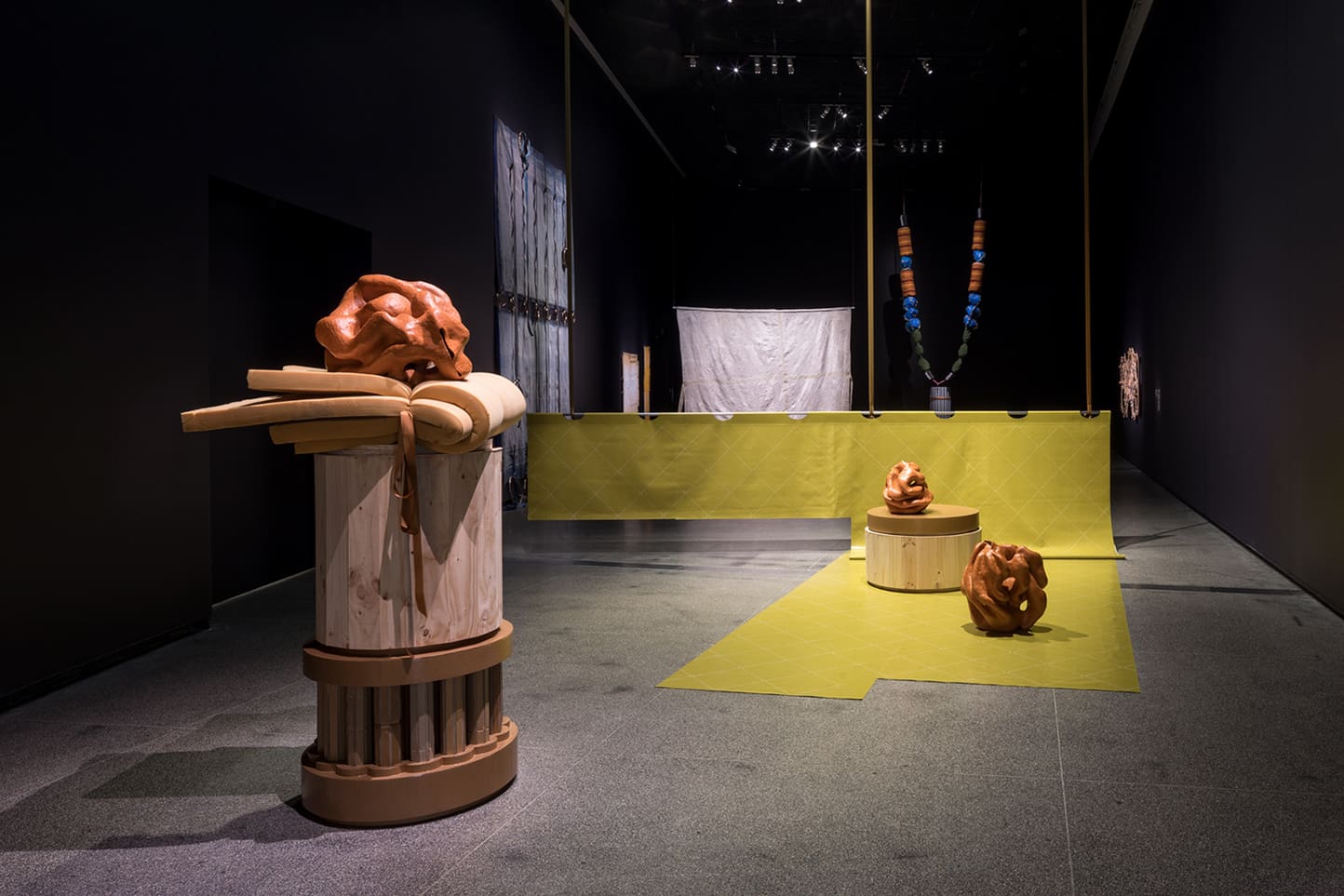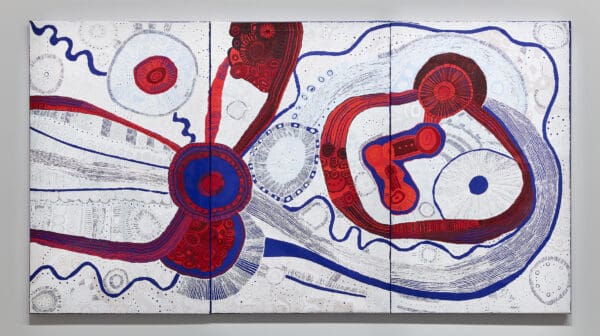
Life Cycles with Betty Kuntiwa Pumani
The paintings of Betty Kuntiwa Pumani form a part of a larger, living archive on Antaṟa, her mother’s Country. More than maps, they speak to ancestral songlines, place and ceremony.

Nicholas Smith, body 2024, installation view, Australian Centre for Contemporary Art, Melbourne. Courtesy the artist and Haydens Gallery, Melbourne. Photograph: Andrew Curtis
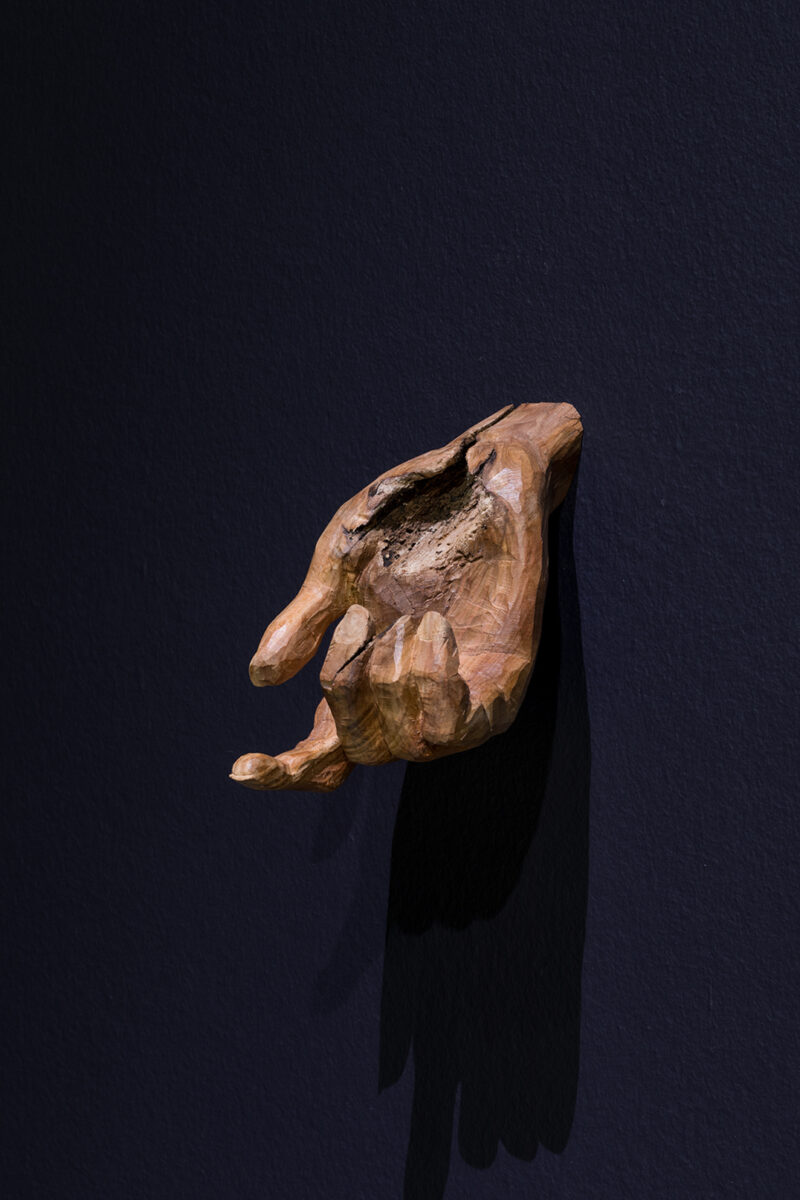
Nicholas Smith, chris 2024, installation view, Australian Centre for Contemporary Art, Melbourne. Courtesy the artist and Haydens Gallery, Melbourne. Photograph: Andrew Curtis

Nicholas Smith, Body II 2023, burnished terracotta, beeswax; bed 2023, foam, floristry ribbons. Courtesy the artist. Photograph: Anna Kučera
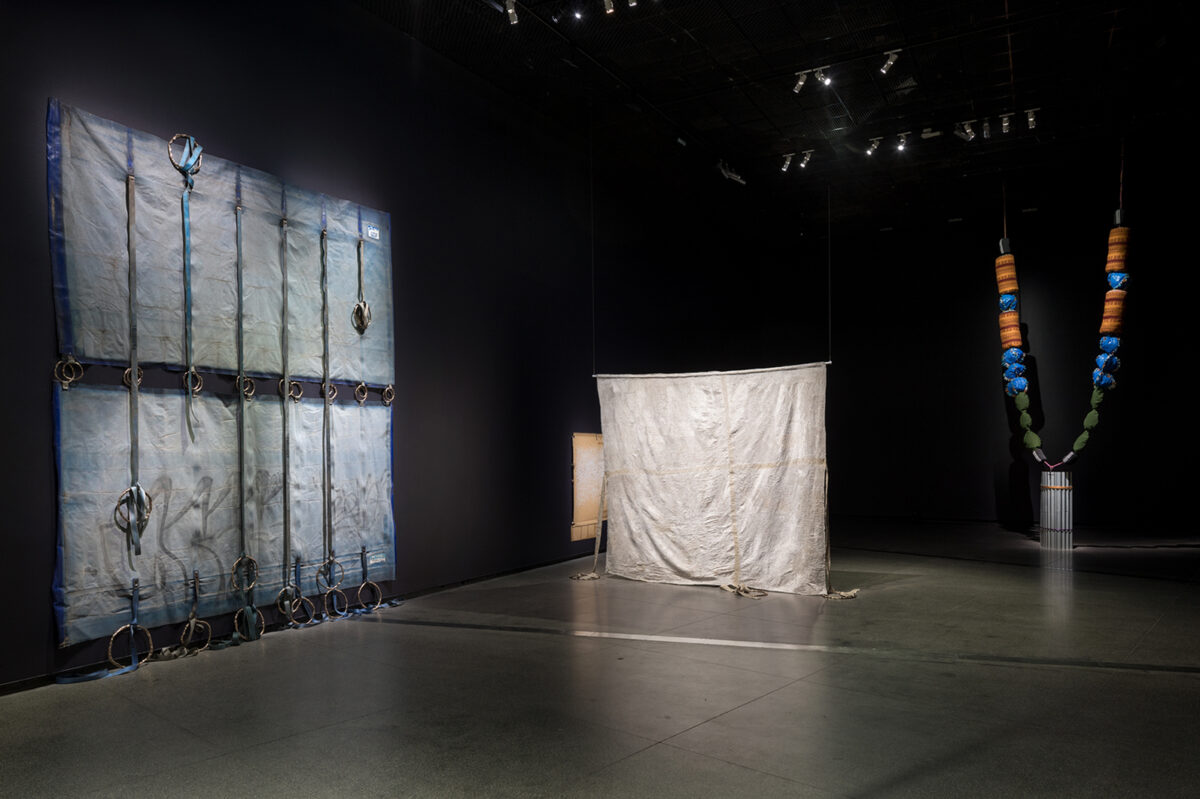
Future Remains: The 2024 Macfarlane Commissions 2024, installation view, Australian Centre for Contemporary Art, Melbourne. Courtesy the artists. Photograph: Andrew Curtis

Future Remains: The 2024 Macfarlane Commissions 2024, installation view, Australian Centre for Contemporary Art, Melbourne. Courtesy the artists. Photograph: Andrew Curtis
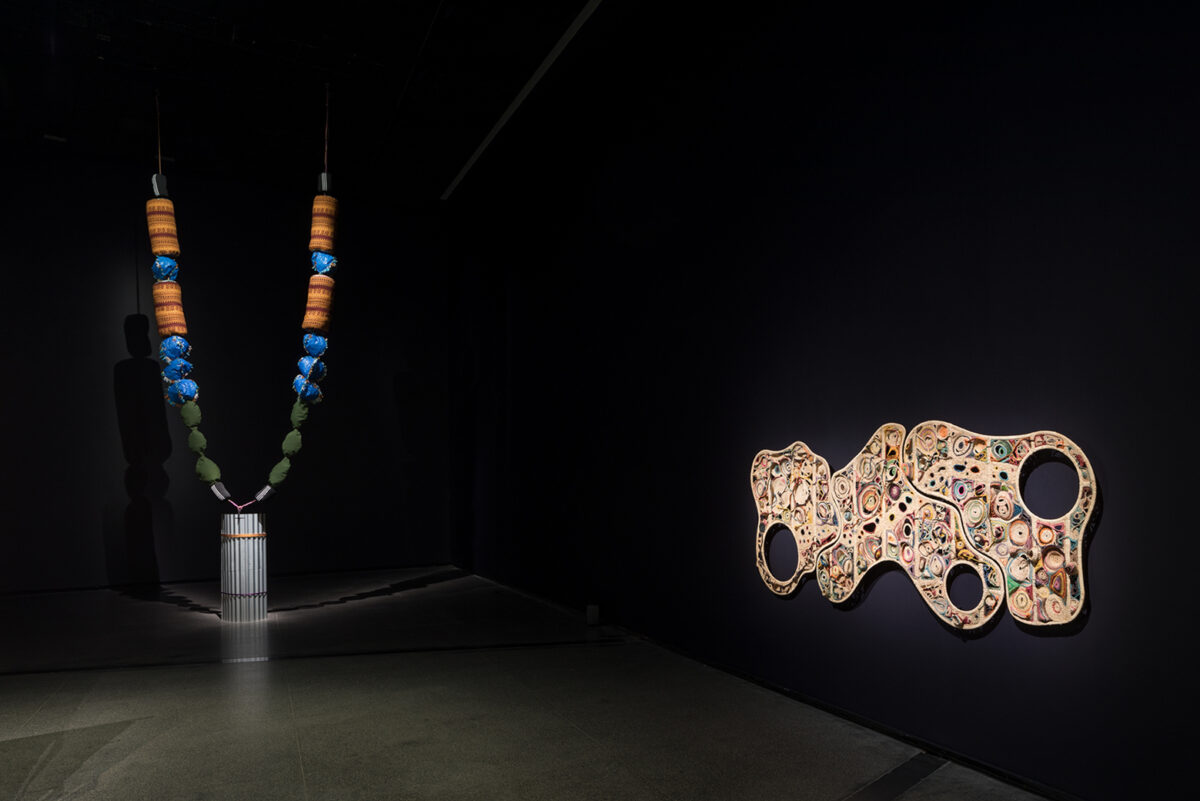
Future Remains: The 2024 Macfarlane Commissions 2024, installation view, Australian Centre for Contemporary Art, Melbourne. Courtesy the artists. Photograph: Andrew Curtis
The term ‘idol’ is thrown around frequently these days; we use it to refer to sportspeople, actors and pop stars. Historically, an idol was considered a visual representation of an object of devotion. In classical sculpture, they were depicted as (often nude male) figures on a pedestal, perfect examples of the human body, intended to inspire aspiration and adoration. The worshiping of idols, or ‘false gods’ has long been condemned by the Catholic Church. Delving into this history inspired Nicholas Smith’s installation a gentle hesitation between, created for Future Remains: The 2024 Macfarlane Commissions at the Australian Centre for Contemporary Art (ACCA). As Smith explains, “Scripture about idolatry was the beginning of this push against sensuality in the Church. It also became a push against sculpture. Sculpture was a way that artists used their hands to create a mimicry of something in the world, which was viewed as a devilish act.”
Smith was raised in a Catholic family in the regional suburbs of Geelong—a conflation of environments that negate queerness. Of his identity formation, Smith says, “When I think back, I try to locate how I expressed my queerness in that environment without having language for it.” The answer is through materials. He looks to the materials and images he was drawn to as a child, and those that still resonate, reinterpreting and restaging them “to tease out queer language that might be embedded.” Materials that have become synonymous with his visual language include clay, foam, cardboard, pine timber, floristry ribbons, and upholstery vinyl. Smith describes them as “poor materials”, yet they have the ability to hold multiple readings—to speak to the feminine domestic realms of interior decoration and craft, utility, aspiration, and to allude to the often-erotically charged imagery of Catholicism.
Sensation and touch are integral to Smith’s practice. He explains, “I really want my body to be present in these bodies that I’m making. Touch, and residue of touch, are a way to do that.” An accumulation of gestures can be read in the ceramic forms, in the carefully tied ribbons, and in the wooden sculptures of gesturing hands that have been carefully carved by the artist’s own hands. He explains: “I take material that already has some kind of seductive quality to it and I try to imbue those qualities with a sense of the body or of touch. Within a religious upbringing, touch and the body are disavowed, so it’s about reinserting the body into those materials.” The binding of foam in decorative ribbons has become a recognisable motif in Smith’s oeuvre. He enjoys the tensions that are suggested between such ideas as function and decoration, love and control, sex and chastity, bondage and freedom. “I’m interested in how my work can be read as queer even though there is no overt queer symbolism. It’s coursing through the materials, but it’s coded.”
The centrepiece of the installation is a vertical, stacked sculpture, titled Idol, which overtly references the history of classical sculpture through the form of the pedestal base and column. Smith is interested in playing with, and interrogating, the authority of classical sculptures and the values they upheld. He enjoys how the language of sculpture elevates the poor, pilfered and aspirational materials he uses—pine wood, cardboard rescued from the side of the road and foam salvaged from caravan cushions—while simultaneously, the materials undermine the grandiosity of the form. It is these contradictions which he aspires to, “where my work inhabits two binaries simultaneously”, creating tension and resisting categorisation.
Smith’s installations begin with the ceramic vessels. These forms are built up slowly over several months using the coiling technique. “Over time, the limits of the clay push against the form I’m trying to produce, through its slumping and sagging. For me that’s the first gesture where my desires are being pushed back against, and that’s the initial push and pull between me and the material.” Once fired, the terracotta ceramic forms are burnished (a slow, methodical rubbing of the surface with a smooth stone to create a sheen without use of a glaze) and polished with beeswax. The burnished, polished clay is soft, velvety and warm to the touch, like skin. Smith tells me that people often desire to feel these curvaceous, sensuous forms. “Because of all the touch on the surface and the lustre of the clay, and even the colour, they’re kind of sexy objects.”
Smith’s ceramic forms – balanced precariously on plinths or lovingly rested on foam beds – act as stand ins for the human body. “For a long time, I was making work that referenced the body, but there was no body in it”, Smith explains. “This form of the ceramics that I developed became a way in which to have a body in the space that was present but wasn’t tied to an identity. It’s an organic shape that can be read as a body but there is nothing that defines who or what it is.” Indeed, you can feel the presence and the lingering traces of bodies throughout the artworks, and even in their titles: body, urn, bed.
Smith has a lovely way of creating settings for his sculptures using the language of domestic interiors. In the cavernous ACCA gallery, he has suspended from the ceiling a large piece of lime-green automotive upholstery vinyl, decorated with a diamond pattern in a nod to kitsch décor. Titled screen, the piece acts as both backdrop and curtain, then extends across the floor like a rug, blocking the viewer’s movements through the gallery. “It’s the first subtle acknowledgement that you are a body in space with this work and you have to decide how you’re going to move around it.”
Future Remains: The 2024 Macfarlane Commissions
Australian Centre for Contemporary Art
On now—1 September
